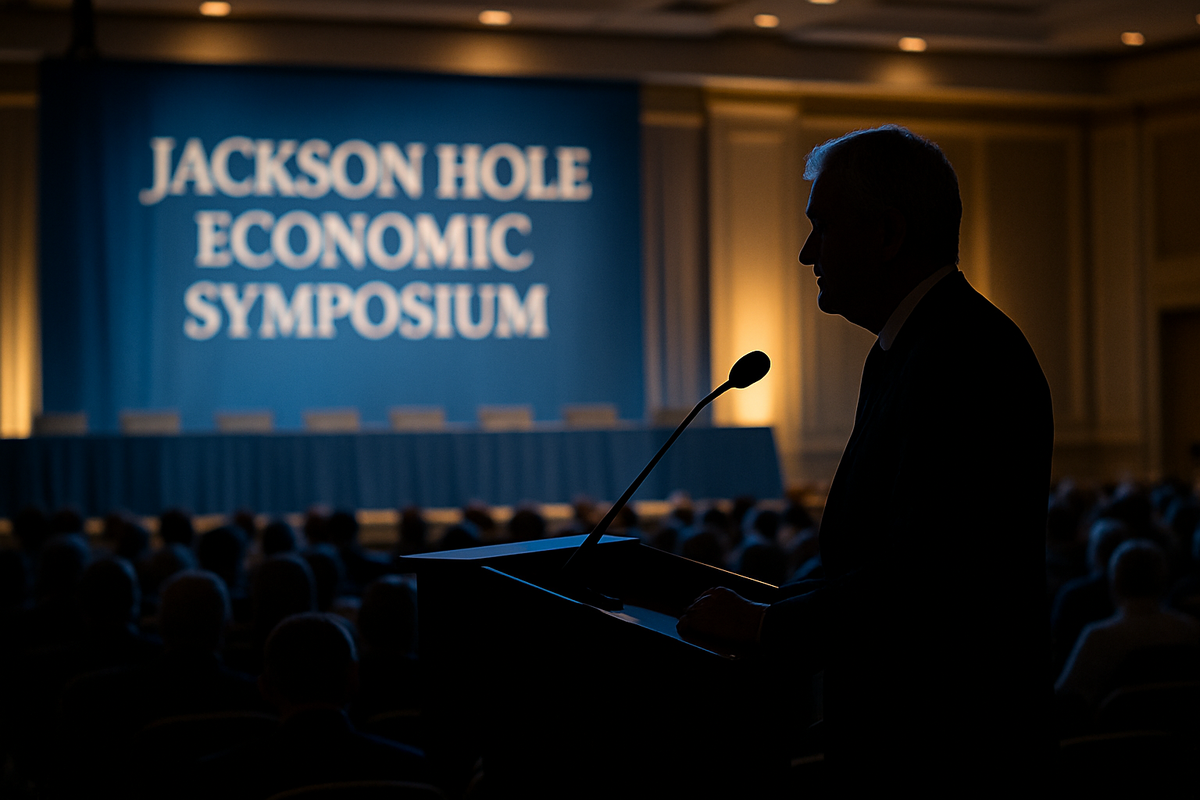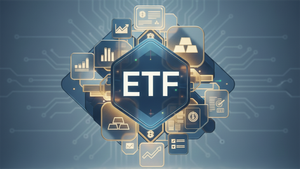
The financial world is holding its breath as the annual Jackson Hole Economic Symposium unfolds, with all eyes firmly fixed on Federal Reserve Chair Jerome Powell's highly anticipated speech. This gathering of central bankers, finance ministers, academics, and financial market participants is widely regarded as a pivotal moment for global monetary policy, and this year's event, which commenced on August 21, 2025, is no exception. Investors are keenly awaiting definitive signals regarding the future trajectory of U.S. interest rates, particularly in light of persistent inflation concerns and a softening labor market.
A palpable "wait-and-see" sentiment has permeated financial markets, leading to muted trading activity and a reluctance among participants to commit to significant positions before clearer signals emerge from the central bank. U.S. stock futures have cooled after weeks of gains, reflecting this delicate balance between recent optimism and the uncertainty surrounding future monetary policy. The U.S. dollar has strengthened, indicating both anticipation and nervousness that Powell might temper hopes for aggressive rate cuts. The symposium's theme, "Labor Markets in Transition: Demographics, Productivity, and Macroeconomic Policy," underscores the complex economic landscape the Fed is navigating.
Powell's Pivotal Address: A Critical Juncture for Monetary Policy
The Jackson Hole Economic Symposium serves as a crucial platform for central bankers to communicate their policy outlook, and Federal Reserve Chair Jerome Powell's keynote address is the undisputed highlight. Historically, Powell has used this forum to signal major shifts in monetary policy, making his speech this year a "critical moment" for policy guidance and potentially a "make-or-break" moment for a more dovish Federal Reserve. This year's address holds particular significance as it is expected to be Powell's final keynote at Jackson Hole, concluding his eight-year tenure as Fed Chair, with reports indicating President Donald Trump's intention not to reappoint him.
Investors are desperately seeking clarity on the timing and magnitude of potential interest rate adjustments. The CME's FedWatch Tool currently indicates an 85% probability of a 25-basis-point rate cut in September, with some estimates pushing this probability even higher, between 80% and 100%. Beyond September, expectations include the possibility of two cuts by the end of the year, or even 25-basis-point cuts in September, October, and December. This aggressive pricing of rate cuts comes despite a complex economic backdrop.
While the labor market has shown signs of softening, with July's jobs report being weaker than expected and prior months' employment data undergoing downward revisions, inflation has recently seen an uptick. Mixed inflation readings, including a slowing Consumer Price Index (CPI) but a rising Producer Price Index (PPI), have contributed to varied market expectations. The increase in core inflation is partly attributed to tariff pass-through effects, adding another layer of complexity to the Fed's decision-making process.
Powell faces the formidable challenge of balancing the Fed's dual mandate of price stability and maximum employment. He could signal a 25-basis-point cut in September, framing it as a necessary adjustment to support the softening labor market, or he might adopt a more cautious, hawkish tone to prevent the market from preempting future decisions, especially amid ongoing inflationary pressures. Notably, the Fed's July FOMC meeting minutes revealed a rare dual dissent from two officials who advocated for a rate cut, indicating internal pressure for easing monetary policy. The bond market is also signaling mixed messages; while the policy-sensitive 2-year Treasury yield has dropped, reflecting confidence in impending rate cuts, the benchmark 10-year Treasury yield has remained relatively unchanged. Furthermore, the "term premium" in the bond market is climbing, driven by U.S. fiscal concerns and inflation expectations that are currently at 3.3% for the next year, well above the Fed's 2% target.
Navigating the Tides: Winners and Losers in a Shifting Rate Environment
The Federal Reserve's monetary policy, particularly its stance on interest rates, acts as a powerful current, propelling some sectors forward while creating headwinds for others. In the current climate, characterized by persistent inflation above the Fed's target and a cooling labor market, the prospect of interest rate cuts or a sustained hawkish stance creates distinct winners and losers among public companies.
Should the Federal Reserve adopt a dovish stance and proceed with interest rate cuts, several sectors are poised to benefit significantly. Real Estate is a primary beneficiary, as lower interest rates directly translate to more affordable mortgage rates, stimulating demand for housing and increasing the profitability of real estate investments. Homebuilders like D.R. Horton (NYSE: DHI) and Lennar Corporation (NYSE: LEN), along with various Real Estate Investment Trusts (REITs), would likely see increased activity and improved financial performance. Similarly, the Consumer Discretionary sector stands to gain, as lower borrowing costs encourage consumers to make large purchases and increase spending on non-essential goods and services. This would benefit major retailers such as Amazon.com (NASDAQ: AMZN) and automotive companies like General Motors (NYSE: GM).
Technology companies, whose valuations are heavily dependent on future earnings, also stand to benefit from decreasing interest rates, as lower borrowing costs are critical for their growth. While some historical data shows initial underperformance, tech stocks often rebound strongly over a 12-month period following rate cuts. Companies like Microsoft (NASDAQ: MSFT) and Apple (NASDAQ: AAPL) could see their growth prospects enhanced. Industrials and Utilities are also expected to perform well; industrials, as cyclical sectors, benefit from reduced borrowing costs for capital-intensive projects, while utilities, as defensive, dividend-paying industries, become more attractive compared to less appealing bonds when interest rates drop. Furthermore, Small-Cap Companies, which generally carry more debt than larger corporations, could experience significant relief on borrowing costs, boosting their profitability and growth potential. Biotech firms, heavily reliant on debt financing for research and development, would also find a more favorable funding environment. Even the Financials sector presents a nuanced picture; while some sources suggest historical underperformance due to economic slowdowns, others argue that banks' lending and refinancing activities can ramp up with falling interest rates, benefiting institutions like JPMorgan Chase & Co. (NYSE: JPM) and Bank of America (NYSE: BAC) through increased volume.
Conversely, a hawkish stance, implying higher or sustained high interest rates, would create a different set of winners and losers. The Financials sector, including banks, insurance companies, and money managers, generally benefits from higher interest rates as their profit margins often expand. Companies with strong balance sheets and high cash reserves, such as large tech giants, would also be more resilient, benefiting from higher interest earned on their idle cash and less reliance on borrowing. Energy stocks could also be supported by higher oil prices, which often contribute to inflation, a key factor in the Fed's interest rate policy. However, a hawkish stance would be detrimental to Highly Leveraged Companies, which would face increased borrowing costs, severely impacting their profitability. Growth Stocks, whose valuations are heavily reliant on future earnings, would become less attractive due to lower future discounted valuations. The Real Estate and Consumer Discretionary sectors would suffer as higher interest rates cool the housing market and discourage consumer spending. Industrials and Materials would also underperform as higher borrowing costs and anticipated inflation undercut business and consumer spending. Finally, Biotech and Small-Cap Stocks, often heavily reliant on debt financing, would face significant financial strain.
Industry Impact and Broader Implications: A Web of Interconnectedness
The Federal Reserve's monetary policy decisions reverberate far beyond the immediate financial markets, creating a complex web of interconnectedness that influences broader industry trends, competitive landscapes, regulatory frameworks, and even international trade. Understanding these ripple effects is crucial for businesses, investors, and policymakers alike.
A lower interest rate environment, often a result of an accommodative Fed policy, directly stimulates the Real Estate sector by making mortgages more affordable, thereby boosting housing demand. This, in turn, benefits industries tied to housing, such as building materials and home furnishings. Similarly, industries producing Durable Goods like automobiles, appliances, and furniture experience increased demand as consumers find it cheaper to finance large purchases. Beyond consumer spending, lower borrowing costs encourage corporate expansion and innovation, potentially leading to increased merger and acquisition (M&A) activity and consolidation across various industries. This fosters an environment conducive to investment in capital expenditures and research and development, driving long-term growth. The entire retail supply chain, from logistics companies to payment processors, also benefits from increased consumer spending. Historically, periods of Federal Reserve rate cuts in non-recessionary environments have often been associated with robust stock market performance, reflecting broader economic optimism.
Conversely, a higher interest rate environment, indicative of a restrictive Fed policy, presents significant challenges. Debt-Heavy Companies are particularly vulnerable as increased borrowing costs can severely dampen revenue and earnings projections. The Real Estate sector experiences a slowdown as higher mortgage rates make home purchases more expensive. A "higher-for-longer" rate environment can force companies to prioritize cost-cutting and efficiency, potentially leading to consolidation in certain industries as weaker players struggle. This can also impact the Job Market, as businesses and consumers pull back on big-ticket purchases or hiring. While higher rates are a primary tool to combat inflation by increasing the cost of accessing money and reducing demand for goods and services, they come with the trade-off of potentially slowing economic growth.
The ripple effects extend to the competitive landscape and supply chain dynamics. Lower borrowing costs can spur M&A activity, leading to industry consolidation and the emergence of new dominant players, which can significantly alter market structures for competitors and partners. Conversely, economic uncertainty and tighter credit conditions, often associated with higher rates, can disproportionately impact smaller businesses and startups that rely on accessible capital, potentially disrupting supply chains. Furthermore, a stronger U.S. dollar, often a result of tighter Fed monetary policy, makes American products more expensive and less competitive in international markets, potentially leading to reduced sales and market share for U.S. companies competing globally. Conversely, foreign competitors selling into the U.S. market may find their products more attractive due to favorable exchange rates. This necessitates that competitors and partners within supply chains adapt, fostering greater collaboration and diversification to enhance resilience.
The Federal Reserve's actions also have significant regulatory and broader policy implications. The Fed's monetary policy stance inevitably influences government fiscal policy; a more accommodative monetary policy, for instance, might provide governments with more leeway for spending initiatives. The Fed operates under a statutory mandate of "maximum employment, stable prices, and moderate long-term interest rates," with a 2% inflation target. It is accountable to Congress and the American people through transparency in its policy deliberations. Beyond monetary policy, the Federal Reserve plays multiple roles, including financial stability regulation, serving as a lender of last resort, supervising banks, and regulating payment systems. The interplay between these roles can lead to contradictions, as evidenced by the U.S. banking crisis in the spring of 2023, which raised questions about whether some of the Fed's roles should be separated to prevent unnecessary financial instability and bailouts. Financial regulations are continuously evolving to strengthen the financial system, and these changes can impact the structure of the financial system and the behavior of financial intermediaries, which central banks must consider when implementing monetary policy.
Historically, the Federal Reserve's journey is marked by its evolving role and significant interventions. Established in 1913 to stabilize the banking system, its early years saw it encouraging banks to purchase government securities during World War I. The Great Depression highlighted the limitations of monetary policy at the "zero lower bound" for interest rates. The Treasury-Fed Accord of 1951 granted the Fed greater independence after World War II. The "Great Inflation" of the 1970s led the Fed to shift its focus to managing the cost of money and credit. The 2008 financial crisis saw the implementation of unconventional monetary policies like Quantitative Easing (QE), which involved the central bank purchasing longer-term investment securities to inject cash and drive down yields, leading to a substantial rise in asset prices. Conversely, Quantitative Tightening (QT), the reverse of QE, aims to decrease liquidity and curb inflation but can increase volatility. Most recently, in response to the COVID-19 pandemic, the Fed again reduced benchmark interest rates to near zero and engaged in significant QE, which contributed to rampant asset appreciation and subsequent inflation, leading to an aggressive tightening cycle from March 2022 to July 2023. These historical precedents underscore the profound and multifaceted impact of Federal Reserve policy on the financial markets and the broader economy.
What Comes Next: Navigating the Uncharted Waters
As Federal Reserve Chair Jerome Powell prepares to deliver his highly anticipated speech at the Jackson Hole Symposium, the financial world stands at a critical juncture, poised to react to the signals emanating from the central bank. The immediate aftermath of Powell's address will likely dictate short-term market movements, but the longer-term implications will depend on the Fed's subsequent actions and the evolving economic landscape.
In the short term, market volatility is almost a certainty. If Powell signals a clear path towards interest rate cuts, particularly a 25-basis-point cut in September, we could see a surge in equity markets, especially in sectors that benefit from lower borrowing costs, such as real estate, technology, and consumer discretionary. Bond yields, particularly on shorter-term Treasuries, would likely fall further. Conversely, if Powell adopts a more hawkish tone, emphasizing persistent inflation concerns and a "higher-for-longer" interest rate stance, equity markets could experience a sell-off, and bond yields might rise. The U.S. dollar's strength will also be a key indicator, strengthening with a hawkish tone and weakening with a dovish one.
Looking further ahead into late 2025 and beyond, the path becomes more uncertain. Strategists' predictions for rate cuts in late 2025 suggest a belief that inflation will eventually moderate, allowing the Fed to ease monetary policy. However, the pace and magnitude of these cuts will be heavily dependent on incoming economic data, particularly inflation indicators and labor market reports. Potential strategic pivots for businesses will involve adapting to a potentially lower-rate environment, which could encourage capital expenditure, M&A activity, and expansion. Companies with strong balance sheets and less reliance on debt will be better positioned to navigate any continued volatility.
Market opportunities may emerge in sectors that are currently undervalued but stand to benefit significantly from a sustained period of lower interest rates. Conversely, challenges will persist for highly leveraged companies and those in sectors sensitive to economic slowdowns. Potential scenarios range from a "soft landing," where inflation gradually subsides without a significant recession, allowing for measured rate cuts, to a more challenging "hard landing," where aggressive rate hikes lead to a deeper economic downturn. Another scenario involves "stagflation," where persistent inflation coexists with stagnant economic growth, presenting a difficult dilemma for the Fed. The outcome will largely depend on the Fed's ability to deftly balance its dual mandate of price stability and maximum employment amidst a complex global economic backdrop.
Conclusion: A Delicate Balancing Act and the Road Ahead
The Jackson Hole Symposium, and particularly Federal Reserve Chair Jerome Powell's speech, represents a pivotal moment for the financial markets and the broader economy. The key takeaway is the delicate balancing act the Fed faces: taming persistent inflation while avoiding a significant economic downturn. Investor expectations for interest rate cuts are high, but the path forward is fraught with uncertainty due to mixed inflation indicators, the impact of tariffs, and the evolving labor market.
Moving forward, the market will remain highly sensitive to every utterance from Fed officials and every piece of economic data. Investors should closely monitor inflation reports, particularly the Consumer Price Index (CPI) and Producer Price Index (PPI), as well as labor market indicators such as job growth and wage inflation. Any signs of sustained disinflation or a significant weakening of the labor market could bolster the case for earlier and more aggressive rate cuts. Conversely, a resurgence of inflationary pressures or unexpected strength in the economy could lead the Fed to maintain a more hawkish stance for longer than anticipated.
The lasting impact of this period will depend on the Fed's ability to navigate these complex crosscurrents. A successful "soft landing" would solidify the Fed's credibility and potentially usher in a period of more stable economic growth. However, missteps could lead to prolonged economic uncertainty or even a recession. Investors should prioritize diversification, maintain a long-term perspective, and be prepared for continued volatility. The coming months will be crucial in determining the trajectory of interest rates and, by extension, the performance of public companies and the overall health of the global economy.





